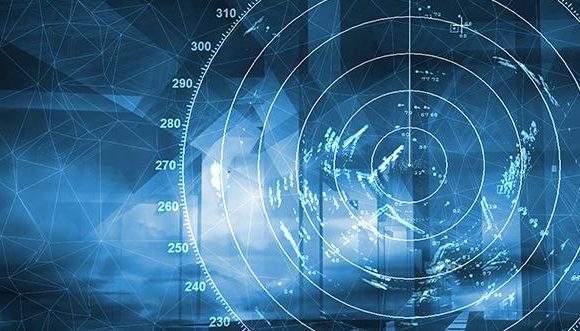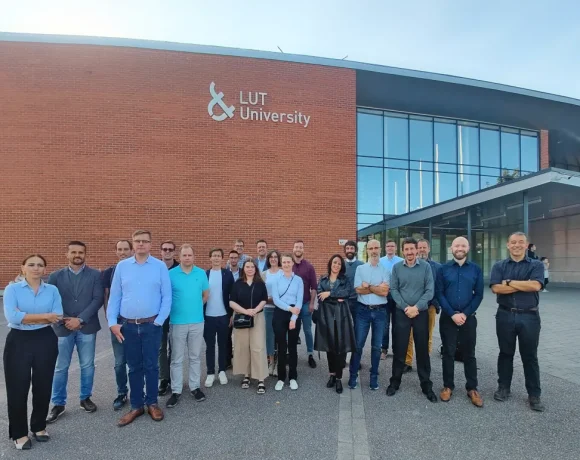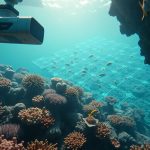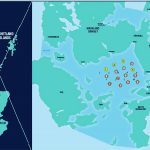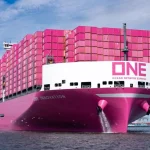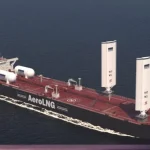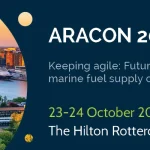From Coral Reefs to Code: Training AI to Recognise Marine Species and Ecosystems

More than 65% of marine species are unknown to science. But, artificial intelligence is changing this fast. It can look at thousands of underwater pictures in just minutes. This is much quicker than what marine biologists can do by hand.
The mix of artificial intelligence and marine conservation is a game-changer for our oceans. Scientists are making smart systems. These can spot fish, check how healthy the sea is, and watch for changes as they happen.
Companies like NVIDIA are giving the power needed for these big steps. Their tools help researchers deal with huge amounts of sea data. This makes species recognition technology better and quicker than before.
This new tech brings hope for saving our seas. With smart systems, we can see our oceans in great detail. We can also fight threats better than ever.
Key Takeaways
- Artificial intelligence can identify marine species faster than traditional methods by processing thousands of images simultaneously
- Advanced computing platforms from companies like NVIDIA enable real-time analysis of underwater ecosystem data
- Species recognition technology helps scientists catalogue previously unknown marine life more efficiently
- AI-powered monitoring systems provide early warning signals for ecosystem threats and environmental changes
- Machine learning algorithms can track long-term trends in marine biodiversity and habitat health
- Automated monitoring reduces the need for costly and time-intensive manual surveys in remote ocean locations
Revolutionary AI Technology Transforms Marine Conservation Efforts
Revolutionary AI systems are changing how scientists watch over marine life worldwide. Machine learning algorithms help them quickly sort through huge amounts of underwater data. Old ways of monitoring were slow and covered only small areas.
Now, conservation technology is overcoming these old limits. These smart systems can check thousands of hours of sound recordings in just minutes. They also look at millions of underwater photos with better accuracy than humans.

Underwater monitoring systems work non-stop over huge parts of the ocean. They send back data fast, saving months of work for researchers. This change is a big step forward in protecting the sea.
The mix of automated analysis and marine biology is a game-changer for protecting ecosystems. These systems can quickly tell what species are there, how healthy the habitats are, and spot dangers. Machine learning algorithms find patterns and changes that people might miss.
Studies show that using AI with passive acoustic monitoring gives deep insights into coral reefs. These conservation technology tools are cheap and work for a long time. They use both supervised and unsupervised learning to improve on old methods.
This new tech opens up fresh ways to protect the ocean. Underwater monitoring systems now cover vast areas and work faster than ever before. This creates new chances for saving our oceans.
The Urgent Need for Advanced Coral Reefs Monitoring Systems
Today’s methods for studying marine life are not up to the task of saving coral reefs. The world’s coral reefs are under huge pressure from the environment. They need quick, detailed monitoring that old ways can’t do.
Old methods of watching reefs can’t give us the data we need today. More than 80% of Earth’s oceans remain uncharted and unexplored says NOAA. This shows how much we don’t know about our oceans.

“The complexity of global reef systems compounds these challenges—with over 65,000 square kilometres of coral reefs worldwide distributed across diverse geographical regions, each exhibiting unique species compositions, environmental conditions, and threat profiles.”
Current Challenges in Traditional Marine Surveying
Underwater surveys by divers are expensive and only cover small areas. They need skilled people, costly gear, and strict safety rules.
People can only stay underwater for so long. Bad weather, seasonal changes, and hard-to-reach places make it hard to collect data. This leads to big gaps in our knowledge of the ocean.
Scale and Complexity of Global Reef Systems
We need a lot of data to track biodiversity, but old methods can’t keep up. Climate change, ocean acidification, and pollution are making reefs worse faster than we can track.
Every reef is different, with its own problems and needs. We need new, automated ways to watch them all. These systems must work over big areas and all the time.
Breakthrough Machine Learning Algorithms for Species Recognition
The use of deep learning has changed how scientists identify underwater species. Now, algorithms can process huge amounts of marine data with great accuracy. This marks a big change from old manual methods to new, smart analysis.
Scientists have made special machine learning tools for the sea. Pattern recognition has improved to deal with the sea’s unique challenges. These tools are trained on huge datasets, including millions of hours of sound and underwater images.

Pretrained neural networks work well with marine sounds. Studies show they can spot species by sound after being trained on 5.2 million hours of audio. This helps oceanographers and remote sensing experts a lot for conservation.
Deep Learning Neural Networks in Marine Biology
Neural networks are great at handling underwater data. They look at visual, sound, and environmental info to make detailed species profiles. They can spot small details that humans might miss.
Convolutional architectures are top at telling similar sea species apart. Deep learning models can also handle complex underwater images with high accuracy. They need a lot of computing power but are very accurate in classifying species.
Computer Vision Applications Underwater
Computer vision has improved to tackle underwater issues like changing light and water clarity. These systems work with underwater camera feeds in real-time. They can keep track of species and individual animals over time.
Modern computer vision technology is good at dealing with the sea’s three-dimensional world. Pattern recognition algorithms use movement, colour, and behaviour to identify species. This way, researchers can monitor the sea continuously, something they couldn’t do before.
Leading Scientists and Research Institutions Driving Innovation
Worldwide, leading research institutions are at the forefront of AI for marine ecosystem protection. They bring together experts from various fields to develop new monitoring technologies. This teamwork changes how we protect our oceans.
The success of AI in marine conservation relies on teamwork between universities, marine research centres, and tech developers. Innovation networks connect continents, uniting marine science and AI experts. This global effort ensures new technologies can help protect different marine ecosystems.
Key Research Teams and Their Contributions
Wageningen University is leading in marine biology research with AI detection systems. Their team creates algorithms that can spot species with high accuracy. They mix marine biology with computer science.
EPFL (École Polytechnique Fédérale de Lausanne) is key in underwater monitoring tech. Their engineers make durable gear for tough marine spots. The Swiss National Science Foundation backs these big research projects.
“The future of coral reef conservation lies in the seamless integration of biological knowledge with artificial intelligence capabilities.”
International Collaboration Efforts
Scientific collaboration speeds up the making of full monitoring systems. The Natural Environment Research Council funds projects across Europe and more. This teamwork lets AI tech work in various marine spots worldwide.
Research teams from different countries share data, methods, and tech to grow the field together. Marine biologists and data scientists team up for better species recognition. This teamwork boosts the effect of each research and builds strong innovation networks for the future.
Training Data Collection and Processing Methods
The success of marine AI systems relies on good data collection and processing. Modern marine conservation needs advanced ways to gather and prepare data. This data must show the complexity of underwater worlds accurately.
Teams use top-notch gear like SoundTrap hydrophone recorders and high-res underwater cameras. These tools capture visual and sound data in various marine areas. This ensures a wide range of marine environments are covered.
Underwater Imaging Techniques
Underwater imaging is key for marine AI training. Special cameras take clear footage at different depths and in different conditions.
Advanced sensors and cameras track species behaviour and habitats. These tools must work well in tough underwater settings while keeping image quality high.
Projects have turned over 340 hours of raw recordings into detailed marine life libraries. The imaging methods make sure the data covers many reef systems and time periods.
Dataset Creation and Annotation Processes
Making good training datasets needs careful planning and teamwork between AI experts and marine biologists. Image annotation involves manually tagging thousands of species in the footage.
Quality checks ensure data is consistent, no matter who collects it or where. Standardised labels help keep the dataset processing accurate.
- Manual species identification by marine biology experts
- Automated quality control validation protocols
- Standardised labelling frameworks for consistency
- Cross-verification between multiple research teams
The final datasets are the base for training AI systems that work well in real marine settings. This hard work lets algorithms spot small differences between species and environments.
Advanced Species Identification Capabilities
Now, advanced machine learning algorithms can spot a wide range of marine life in coral reefs with great accuracy. These systems use complex visual data to tell apart thousands of marine species. They do this with precision that often surpasses human expert capabilities.
Modern AI platforms use different identification methods to fully understand reef communities. This helps in recognizing all species in the area.
By combining computer vision with marine biology, we’ve made powerful tools for automated recognition and taxonomic analysis. These tools learn from huge datasets. They get better at classifying marine life with each new environment they see.
Fish Species Recognition Accuracy
Today’s fish identification systems can spot common reef species with accuracy rates over 95%. They look at body shape, fin patterns, and swimming habits. They can tell apart species that look very similar by noticing small colour and skeletal differences.
These systems also count fish populations in real-time. They track size and behaviour. This lets researchers study reef life without harming it.
Coral Type Classification Systems
Coral recognition algorithms can identify over 400 coral species with high precision. They can tell hard from soft corals and check their health and growth. Advanced methods can spot early signs of bleaching before we can see it.
These systems also track changes in coral coverage over time. This data is key for planning conservation and managing reefs.
Invertebrate Detection Algorithms
Special algorithms are great at finding hidden invertebrates that are often overlooked. They spot small crustaceans, molluscs, and echinoderms that are vital to the ecosystem. They can even find species that are active at night or hidden in coral.
These tools also monitor behaviour and map where invertebrates live. This helps us understand the ecosystem better.
Ecosystem Health Monitoring Through AI Analysis
Advanced artificial intelligence offers top-notch ecosystem monitoring that beats old methods. It gives marine experts real-time reef health updates. This helps spot threats early, preventing big damage.
AI and underwater sensors work together to monitor the ocean. They look at lots of data at once. This helps find small changes that show if the ecosystem is stressed or healing.
Bleaching Event Detection
Bleaching detection is a big step forward in coral reef watching. It uses AI to spot when coral turns white, showing it’s lost its algae due to stress.
These AI tools measure how bad the bleaching is in different parts of the reef. They track how bleaching spreads and link it to things like temperature and water quality. This helps scientists predict and prevent bleaching.
“Early detection systems can identify bleaching events up to two weeks before they become visible to human observers, providing critical time for intervention strategies.”
Biodiversity Assessment Tools
Top biodiversity analysis tools check how healthy an ecosystem is by looking at all the species. They look at how many species there are, how common they are, and how they live together. This gives a full picture of the ecosystem.
AI finds changes in who lives where that might mean the environment is changing. Reef health assessment tools watch how populations change over time. They show where we need to act fast to protect the reef.
Using sound and sight together gives a full view of the ocean. This way, we can see how all the different parts of the ecosystem work together. It gives us deep insights into the ocean’s life.
Real-World Implementation Across Global Reef Systems
AI technology has moved from lab tests to wide-scale monitoring in oceans. It shows the practical viability of AI-powered marine conservation tools in real environments.
Studies from places like South Sulawesi Indonesia, Lizard Island Australia, and French Polynesia show the tech’s global use. These tests prove it works well in different reefs and sea conditions.
Great Barrier Reef Pilot Programmes
The Great Barrier Reef is key for testing AI monitoring. These pilots have set up continuous monitoring at many reef sites. They watch over the health of the ecosystem and track species in real-time.
Challenges like making equipment last, sending data, and upkeep have been tackled. These efforts have given insights for using AI in reefs around the world.
Caribbean and Pacific Ocean Deployments
AI systems have been tested in the Caribbean and Pacific. They’ve shown they can adapt to different sea life and ecosystems.
These tests show the need for localised training data and calibration for the best results. Working together has helped share knowledge and improve practices globally.
These successes have built trust in the technology. They open the door for more use in reefs everywhere.
Technological Infrastructure and Equipment Requirements
The heart of AI in marine monitoring is underwater technology for tough ocean conditions. Modern marine conservation needs strong tech that works well under water for a long time.
Setting it up needs a solid data infrastructure to handle lots of data. These systems must work well with current research setups and keep running smoothly in tough spots.
Underwater Camera Systems
Camera systems are key for marine AI monitoring. They must handle extreme pressure, saltwater damage, and changing light while taking clear pictures.
Today’s underwater cameras have many angles and infrared. They also have auto-clean features for steady data. Processing capabilities let them analyze data live and send it off right away.
SoundTrap hydrophone recorders add to the visual by catching sound data. Advanced sensors watch over the environment in many ways at once.
Data Processing and Storage Solutions
Cloud-based systems offer the power needed for AI’s complex tasks. They deal with endless data from many monitoring spots around the world’s reefs.
Safe data storage is key, with cloud solutions making sure data is always there. Data is sent in real-time using satellites and boats as messengers.
It’s important for these systems to work with current marine research data infrastructure. Standard formats help everyone work together, no matter where they are.
Impact on Marine Conservation Strategies
Advanced artificial intelligence is changing how we protect marine ecosystems. These systems give real-time data insights. This helps in making better conservation plans and decisions.
It’s not just about collecting data. AI helps with detailed assessments of ecosystems. This supports better marine conservation worldwide.
Policy Development and Implementation
AI helps in making better conservation policies. It gives objective, quantitative assessments. This reduces the need for old survey methods.
Thanks to AI, policies can change faster. They can now include new environmental data and threats. This makes planning more effective.
AI also helps in working together globally. It makes data formats the same everywhere. This helps in protecting oceans together.
Conservation Resource Allocation
AI has changed how we manage resources for conservation. It finds the most urgent areas and predicts risks. This helps in focusing efforts where they’re needed most.
Now, groups can show how their work is making a difference. They can prove their success with measurable outcomes. This keeps funding for ocean protection coming.
- Optimised deployment of limited conservation resources
- Identification of successful intervention strategies
- Predictive modelling for threat assessment
- Enhanced monitoring of restoration efforts
AI also helps in planning for the future. It allows for quick changes in response to new challenges. This makes conservation more adaptable.
Challenges and Limitations of Current AI Systems
AI systems for marine monitoring have made great strides, but they face big hurdles. These system limitations are major obstacles for researchers and conservation groups. They need to overcome these to use AI widely in reef systems around the world.
Marine environments are complex, unlike what AI systems usually deal with. They need special gear and smart algorithms to handle the changing conditions underwater.
Environmental Factors Affecting Accuracy
Many environmental factors affect how well AI systems work in the sea. The clarity of the water changes a lot, which impacts how well images are taken for identifying species.
Underwater lighting changes a lot, too. This means the systems need to be constantly adjusted to keep their accuracy up. Also, rough water and weather changes add more challenges for the systems.
- Variable water clarity affecting image quality
- Changing lighting conditions requiring constant calibration
- Turbulent waters obscuring visual data collection
- Seasonal variations impacting equipment performance
Technical and Funding Constraints
There are big technical challenges to using AI in the sea. The systems need a lot of power to handle big data fast. They also need experts to keep them running smoothly.
Putting this gear in the sea is hard. Saltwater and extreme temperatures can damage the electronics. This means the systems need a lot of upkeep and parts replacement.
The biggest problem is the funding requirements. Starting up costs for the gear, software, and upkeep are very high. This makes it hard for many groups to use these advanced tools.
Future Developments and Expansion Plans
AI-powered marine monitoring systems are set to change ocean conservation worldwide. These new technologies will be more precise and useful in many marine places. They mark a big step up from what we have now.
Teams around the globe are working on new algorithms. These will change how we protect marine life. By combining advanced sensors with new processing, we can monitor oceans better than ever.
Advanced Processing Capabilities
Next-generation systems will use multi-modal data fusion technology. This mixes visual, acoustic, and environmental sensor data. It will help us understand marine ecosystems more accurately than before.
New predictive algorithms will predict changes in ecosystems and where species will move. This lets conservation teams act early to prevent big problems.
Edge computing will make analysis faster, even in remote areas. This means we can keep monitoring oceans, even when internet is scarce.
Worldwide Implementation Strategies
Plans are to set up monitoring stations globally, focusing on big reef systems. This will give us a big picture of how climate change affects oceans and ecosystems.
Standardising data collection will make sure different systems work together. This will help research teams worldwide share data and work together more easily.
New, affordable, and easy-to-use systems will make advanced monitoring available to all. Even smaller research groups can now use AI technologies that were once only for big institutions.
Conclusion
The mix of artificial intelligence and marine biology is a big step forward for protecting our oceans. These advanced systems can spot species, check on habitats, and see how reefs are doing in real time. They work well in many different sea areas.
AI does more than just automate tasks. It lets scientists watch over huge parts of the ocean with great accuracy. They can find small changes that might be missed by old ways of watching. Now, places like the Great Barrier Reef and Caribbean waters are always being watched by these systems.
The future for saving our seas looks good thanks to new tech. Machine learning gets better with each use, and working together across the world helps a lot. This shows our dedication to keeping our oceans safe with the latest science.
As the weather gets worse, AI tools give us hope for saving our oceans. They help us deal with big environmental problems. This mix of tech and sea science is starting a new time of caring for our oceans.

